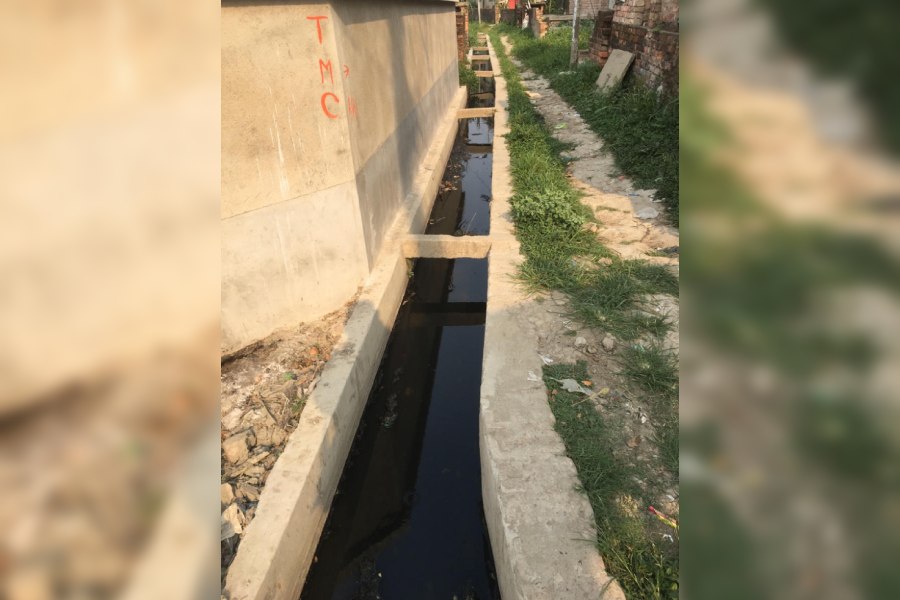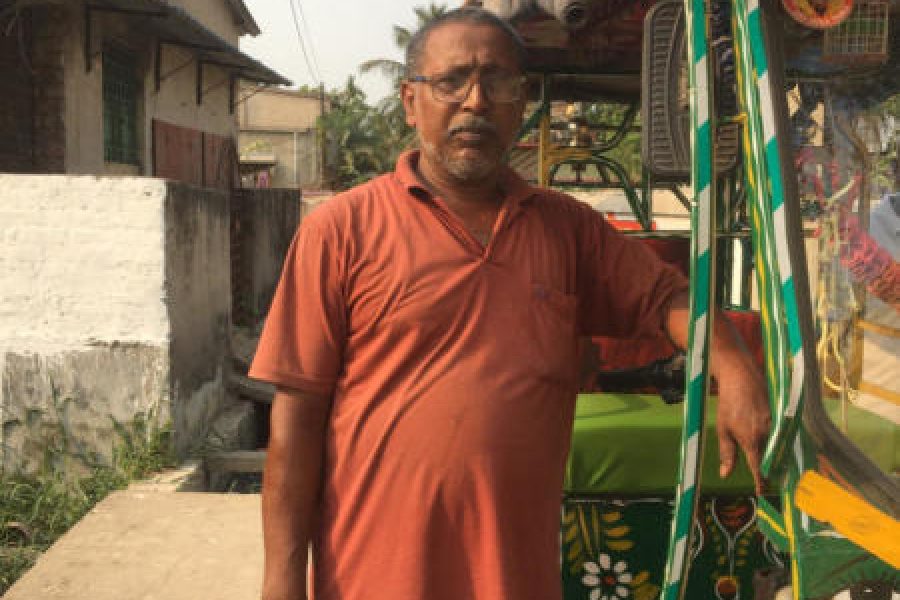Subhasgram was named after Netaji Subhas Chandra Bose, whose ancestral house stands in this south Bengal locality, about 25km from Calcutta. The area belongs to the Rajpur-Sonarpur municipality.
Bose’s presence is still strong here. Several of his busts look from street corners at the passing traffic of cars, autos and totos. But the eminence of Subhasgram does not rest on Bose alone.
A few of the most celebrated names of the Bengal renaissance, including Dwarakanath Vidyabhsan, Ramnarayan Tarkaratna, Shivnath Shastri and M.N. Roy, were born in Subhasgram, earlier known as Changripota.
Dwarakanath, a contemporary and colleague of Ishwarchandra Vidyasagar, founded the Bengali newspaper Somprakash, which was remarkable for its fearless criticism of the British administration. Shivanath Shastri was a renowned writer, philosopher and Brahmo leader. Umesh Chandra Dutta had established the Harinavi Brahmo Samaj in the area in the 19th century despite immense opposition.
But Changripota was distant from Calcutta, where everything happened. It is said that before the railway line was established, Dwarakanath would walk to Sanskrit College, where he taught, every day. One wonders how long it would take for him to reach Calcutta, negotiating, with a lecture on his mind, the narrow aals, the mud boundaries between agricultural fields, because other than the populated areas here everything was paddy fields then.
A lot has changed in almost two centuries. But no change, perhaps, has been more stark than the one that started about two decades ago.
The names of places remain the same, which makes the irony more brutal.
As one turns into the Dhaanmath (meaning paddy field) stretch in the Subhas Park neighbourhood here, passing another Bose statue, one sees a concrete jungle. This is expected, as unplanned construction is rampant in this area, with the city spreading southwards pell-mell. But In Subhasgram localities such as Subhas Park, this is attended by another problem. Every rainy season, the area remains submerged in drainwater.
Even as houses have been built on paddy fields — not a single paddy field is in sight now — and narrow concrete streets have been built between them, the concretisation has stopped water from flowing out of the area. This is a severe problem in many places of the Baruipur sub-division, of which Subhasgram is a part and is a perfect example. The problem persists in extreme forms in other nearby areas.
It demonstrates the paradox of “development”.
Along the narrow streets in Dhaanmath, kuchcha (not concretised) drains have been dug, but even on walking through a 5sqkm area, one cannot see a single drain in which the water is flowing. It is completely stagnant. In some places it has turned solid. Depending on the kind of waste that has collected, the wdrainwater has taken on different shades. The entire area smells foul. As soon as the sun sets, mosquitoes rise like clouds from the drains, all the year round.
The water that collects in the monsoons, or if it rains heavily during other times of the year, for days at a stretch, leaves its mark. The boundary wall of each house is a different shade from the rest for about 2.5 feet from the ground level, the mark at which the water stands, outside as well as inside homes.

An open drain in Subhasgram
Chandan Ghosh, who came to the locality in the late 90s and built his small one-storey house here, says there were paddy fields all around then and water would not collect in the locality. Ghosh works as a contractor in Calcutta. “Whatever good happens, happens in Calcutta,” he says.
Ghosh says previously the water from the locality and surrounding areas used to drain into the Panchghora canal, a few kilometres away, but now the flow is blocked by construction. Small, mostly one-storey houses with asbestos stand cheek by jowl.
When the area is water-logged, water enters Ghosh’s house. It is always two or three days at a stretch; sometimes seven. Cooking is done on the bed or on tables. He is too embarrassed to talk about the difficulties of using the toilet at that time.
Septic tanks are not common in the locality; waste is removed manually from most toilets.
Drinking water has to be bought entirely then. But that Ghosh does otherwise, too. “The water from the tubewell is not good enough,” he says. Other families, which cannot afford to buy water every day, drink water from the tubewells. But not enough water can be drawn through tubewells now, in this heat.
Going to work through the stagnant water is a battle. “But we have to do what we have to do,” says Ghosh.
Bhudeb Naskar, a rickshaw driver, says he feels sorry for the women in his household when the area is submerged. He lives in a small brick house. “The women in my family work as maids. They cannot sit at home. They have to lift their saris well above their knees to wade through the dirty water. It’s difficult to look at them,” says Naskar.
The problem started after the streets began to be built in between the houses. The paddy fields had begun to be sold as plots for houses during the years of the Left. When the Trinamool government came to power in 2011, it built the streets.
“It has helped us because the earlier uneven ground made life difficult,” says
Swapan Mistri, who works as a mason.










